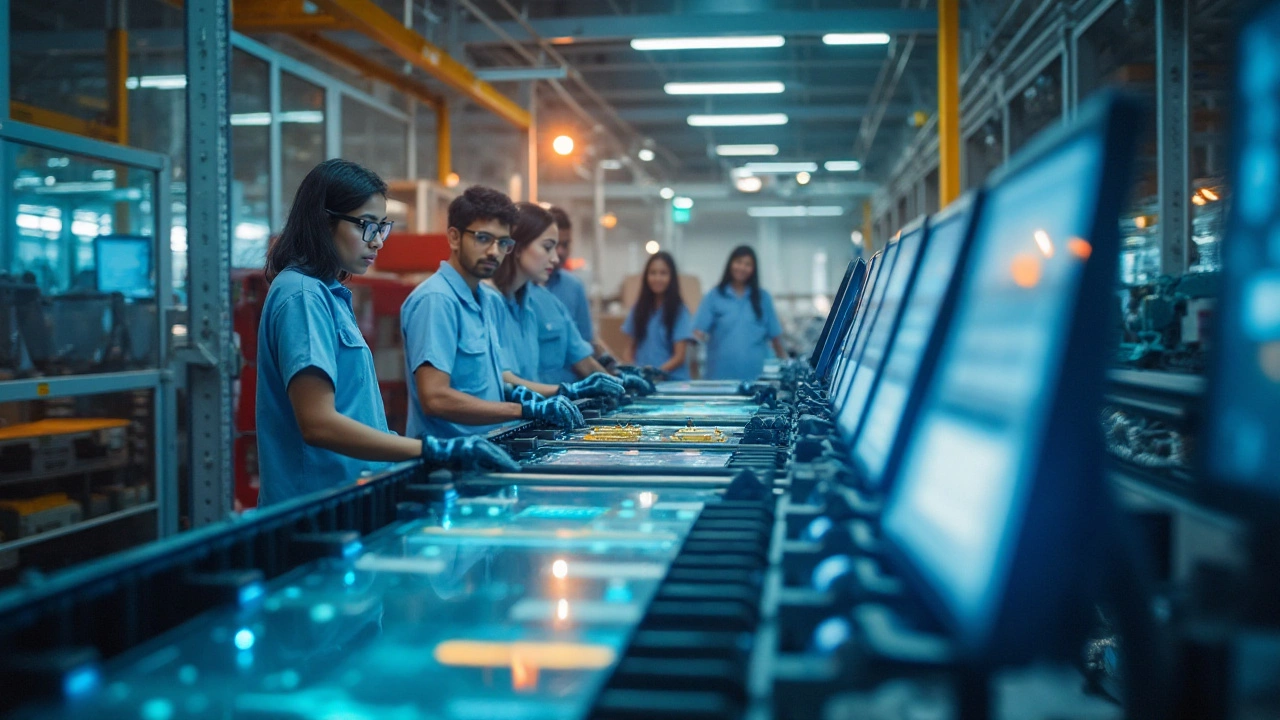Industry Insights: Trends, Tech, and Practices for India
When you dig into industry insights, a curated look at how key sectors evolve, what technology drives change, and which policies shape the market, you’re getting more than a buzzword. It’s a snapshot of real‑world shifts that affect factories, farms, and the everyday consumer. Think of it as the cheat sheet you wish you had before a boardroom pitch or a field‑work trip.
One of the biggest drivers behind today’s manufacturing, the process of turning raw materials into finished goods at scale is digitalization – everything from IoT sensors on assembly lines to AI‑based demand forecasting. At the same time, sustainable agriculture, farming methods that preserve soil health, water, and biodiversity is reshaping supply chains, pushing manufacturers to adopt eco‑friendly raw materials and clean energy. The plastic industry, global producers of polymers used in packaging, automotive parts, and consumer goods is feeling the heat of recycling mandates, leading to a surge in recycled PET and rHDPE usage. And don’t overlook the textile industry, the sector that weaves, dyes, and finishes fabrics for fashion and home goods, which is pivoting toward low‑water dyes and circular design.
Why These Insights Matter
Industry insights encompass trends, technology, and policy all at once. For manufacturers, the data tells you which plastics are gaining demand in 2025 – think rPET for bottles and rPP for automotive panels – so you can source smarter. For farmers, understanding the shift toward no‑till or drip‑irrigation under mulch can cut water use by up to 30%, directly affecting the cost of raw cotton that feeds the textile supply chain. The connection is clear: when the plastic sector adopts recycled feedstock, it reduces landfill pressure, which in turn eases the regulatory load on agricultural runoff, benefitting both food safety and fabric quality.
Look at the automotive slowdown in India as a case study. The dip in car sales isn’t just a buyer‑mood issue; it reflects tighter credit, rising fuel costs, and a supply‑chain bottleneck for steel and aluminium. Those same material constraints push the plastic industry to offer lighter, recyclable alternatives, while manufacturers scramble for cost‑effective production methods. These ripple effects illustrate the semantic triple: industry insights requires cross‑sector data analysis, and policy changes influence both manufacturing and agriculture outcomes.
From a practical standpoint, you’ll find that the best way to act on these insights is to start small. Test a recycled‑content component in one product line, or pilot a drip‑irrigation system on a single field. Track key metrics – cost per unit, water usage, and customer feedback – then scale up if the numbers improve. This iterative approach mirrors how top‑paying factory jobs in the UK evaluate skill upgrades: they measure impact before committing large budgets. Similarly, a gardener can measure soil moisture after rehydrating dry soil with organic mulch before overhauling the whole garden layout.
One recurring theme across the posts on this page is the balance between profit and sustainability. Whether you’re eyeing the highest‑paying factory roles, planning a rice‑centric diet, or choosing the most expensive plant to grow in India, the underlying question is the same: how does the choice affect the broader ecosystem? By linking manufacturing trends with agricultural practices, you can spot opportunities – like using locally sourced cotton for textiles, which trims transport emissions and supports rural economies.
Below you’ll discover a hand‑picked set of articles that dive deeper into each of these areas. From expert watering guides for container gardens to the latest plastic demand forecasts for 2025, the collection gives you concrete data, step‑by‑step advice, and real‑world examples to turn insight into action. Keep reading to see how each piece fits into the bigger picture of India’s evolving industrial and agricultural landscape.
Discover the Top Manufacturing State in the US for Startups
The article explores the leading manufacturing state in the US, providing insights and tips for startups. It examines what makes this state ideal for manufacturing, including availability of resources, skilled workforce, business environment, and technological advancements. Aspiring entrepreneurs can gain useful ideas for establishing manufacturing ventures and strategies to thrive in this competitive industry. The piece serves as a guide for those aiming to tap into the thriving manufacturing landscape.
- manufacturing
- India
- food processing
- garden tips
- rice cultivation
- government schemes
- balcony garden
- urban gardening
- balcony gardening
- profitable business
- business ideas
- plastic manufacturing
- drip irrigation
- plant care
- steel manufacturing
- sustainable gardening
- startup ideas
- steel industry
- flower gardening
- textile manufacturers






